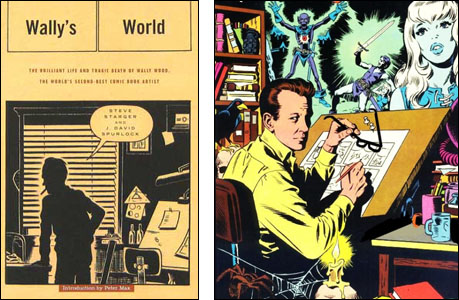
I've been derelict in my duty. I get a lot of fine books that are about comic book history or which feature reprints of classic comic books or strips…and I keep meaning to recommend them to you. Somehow, I keep not getting around to it…but since I have my own comic book book coming out before the end of the year, the least I can do is make the effort. So for the next few days/weeks/months — however long it takes before I get too busy or I start forgetting — I'm going to suggest one each day to you.
These are not reviews so much as recommendations so I should declare here that I'm not fond of everything I've seen in this area lately. Some of the reprint books have had very weak reproduction…or in a few cases, have been "restored" to death by some guy who has Photoshop but no idea of how conspicuous his presence is on pages that should represent the work of someone else. Some of the history books have been born of good intention…but done by someone who didn't have access to the proper sources. That's assuming those sources are still available, which is not always the case. I'm going to move those books to the bottom of the pile and deal from the top.
Today, I'd like to point you towards Wally's World: The Brilliant Life and Tragic Death of Wally Wood, the World's Second Best Comic Book Artist — and yes, that's an Amazon buying link — by Steve Starger and J. David Spurlock. I'm not sure I'd say Mr. Wood was the second best comic book artist, nor am I sure who they think is/was Numero Uno. Then again, I wouldn't waste time arguing the point, either. He was a tremendous talent whose life and career (though rarely his art) were tinged with stress, pain and despair. This biography starts with his 1981 suicide, then flashes back through his life to see him struggle, producing wonderful work for employers who often were not grateful or generous.
I didn't know Wood that well…met him three or four times, spoke with him for maybe two hours total over ten years. He was an angry man but with a veneer of despair that made you wonder how life and the industry could be so harsh to someone who drew so well. But of course, he did a lot of it to himself. Other fine artists lived in the same system and usually made it work for them. The book by Starger and Spurlock tracks Wood's life at the drawing table and away from it, giving us some insight into why his life went the way it did. Not that it's completely understandable but I felt I learned something about the guy…plus there are a lot of nice pictures to look at. Get yourself a copy.